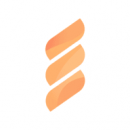Pay-per-click works if approached correctly. The best PPC campaigns make the investment seem trivial because $10 clicks are bringing $300 sales. The worst ads just float in users’ peripheral vision, ignored and ineffective.
So, how do you create a solid PPC plan? Here are three digital businesses using PPC to find new leads and boost profitability.
PPC Success Story: Smartsheet.com
Brent Frei, co-founder of Smartsheet.com, uses “tightly run, highly measured pay-per-click programs” to drive trial users to their SaaS platform. For Frei, the key to PPC success lies in testing many combinations of words and phrases. They constantly change and track ad text.
“We’ve found rearranging copy in a headline or changing the description line from prose to a customer quote can increase click-through rates by 8 percent or more,” Frei said.
He emphasized that this testing isn’t just done for English-speaking audiences, because the company’s online collaboration tool is used in 165 countries. Smartsheet has expanded their PPC ad testing to include variations in eight languages.
In terms of ad targeting, Frei isn’t a fan of broad matching. Smartsheet uses geography, time, and language – plus some known buyer characteristics – to focus only on certain potentially profitable customers.
“We use Google AdWords and Bing Ads, along with some sophisticated tools like GA Content Experiments and Optimizely, combined with our own analysis, to measure which market segments are the most valuable,” Frei said. “We double down on those and turn off those that are underperforming.”
This has helped Smartsheet see rapid growth – but not in its ad budget.
“There is no direct correlation between budget and results,” Frei explained. “If you get a big infusion of cash and you can triple your PPC budget, it won’t necessarily triple the volume of same quality of leads.”
PPC Success Story: Chemstations
Chemstations sells chemical process simulation software. When brainstorming an advertising plan with their agency, it quickly became apparent that they needed to target a precise group of engineering customers who are key buyers and decision makers. Targeting anyone else wouldn’t lead to sales.
This need to target by specific profession led Chemstations to be an early adopter of LinkedIn pay-per-click advertising. Brandextract strategist Elizabeth Tindall helped launch the LinkedIn program for Chemstations.
“We created an ad that would run on LinkedIn newsfeeds, making sure to implement CPC (cost-per-click) rather than CPM, which is impression-centric,” Tindall said. “We felt that, for this specific campaign, CPC would drive more actionable results because it tracks high-value interactions. We selected a target audience that would be most likely to click on a Chemstations ad — chief technology or operations officers and others who would ultimately make software purchasing decisions for their companies.”
So as chief technology officers browse new jobs on LinkedIn, they also see Chemstations ads for engineering software that keeps them on the cutting edge. The text and wording has been an important part of the program, but photos have proved to be even more crucial. Chemstations ads with pictures of people looking directly at the viewer are by far the most effective.
“We also made sure to use creative elements that draw viewers in and encourage them to click,” Tindall explained. “We found that implementing pictures of Chemstations employees was an effective approach.”
PPC Success Story: Hutch
Facebook can be a tantalizing place to advertise. After all, it reaches more than 1 billion people every day, all around the world. But creating a bad Facebook ad is like shouting into a crowd; you’ll do nothing but chase people away.
Optimized Facebook ads are a step beyond basic PPC. They’re mobile-friendly and placed in specific high-traffic spots. Facebook users encounter them in the news feed, videos, slideshows, and on Facebook’s partner, Instagram. The ads are carefully targeted at best prospects.
Interior design app developer Hutch ran a test using optimized Facebook ads to try to boost app installs. During the testing period from May to April 2017, Hutch saw a tenfold increase in app installs that led to an 81 percent conversion rate.
A major contributor to the campaign’s success was precision targeting. Hutch used the Facebook targeting tool to reach women in the U.S., aged 45 or younger, who were following interior design companies.
They also used the Facebook lookalike tool, which expands an ad’s reach by targeting people who look like your target audience but don’t match your criteria exactly. Hutch was able to reach U.S. women under age 45 who might not follow interior design companies but follow lots of other interior design-related businesses or bloggers.
Hutch’s CEO and co-founder, Beatrice Fischel-Bock, saw the test’s immediate results and made Facebook PPC ads an ongoing part of the company’s ad plan. “Facebook will continue to play a pivotal role in efficiently acquiring Hutch app users,” she said.
Curious about other ways you can optimize your selling? Download our guide, What You Need to Know About Selling Online.
![[Customer Story] Why TestDome Considers FastSpring a Real Partner](https://fastspring.com/wp-content/themes/fastspring-bamboo/images/promotional/2023/FastSpring-TestDome-blog-thumbnail.jpg)








